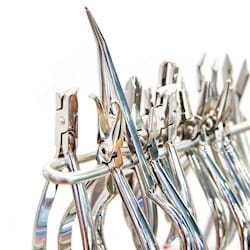BACKGROUND
A dental member in England contacts MDDUS for advice in regard to an incident in which a patient had the wrong tooth extracted.
Dr G was undertaking treatment on her IMOS (Intermediate Minor Oral Surgery Service) list, which included a number of patients requiring extractions. A patient left the waiting area during the clinic to make a phone call and so the dental nurse called the next patient in line – Mr D.
A referral letter requested extraction of LR8 and Dr G placed a finger on the tooth to confirm. Mr D stated he was unsure which tooth was too be extracted as a number of his back teeth needed to be removed – but he was okay with whatever the referral letter called for.
Dr G discussed risks and LR8 was extracted without complication. Mr D was provided with postoperative instructions.
The nurse called the next patient and only then did Dr G realise she had consulted the wrong referral letter and therefore extracted the wrong tooth from Mr D – who should have had UR7 removed.
The practice receptionist immediately contacted Mr D who returned later that afternoon. Dr G apologised and explained what had happened, assuring Mr D that the tooth removed had extensive decay with gum disease and was therefore unrestorable. She made a detailed note of what was discussed and in having this conversation fulfilled her duty of candour. Mr D was provided an appointment to have the correct tooth extracted a week later and was refunded all treatment costs.
The practice later receives a complaint from Mr D, and Dr G contacts MDDUS asking for advice on the response.
ANALYSIS/OUTCOME
An MDDUS dental adviser responds by letter encouraging the practice to undertake a significant incident analysis (SEA), which can then be used in a written response to the patient. The SEA should include full details of the incident and how it has been investigated, along with actions agreed to ensure that the error will not be repeated.
Dr G and the practice team are encouraged to review the Faculty of Dental Surgery Tool kit for Local Safety Standards for Invasive Procedures’ (LocSSIPs) for wrong site extraction in Dentistry on the crucial need to always check the patient’s name prior to proceeding, along with the tooth to be extracted.
The dental adviser later reviews a draft letter of response to Mr D in which Dr G first acknowledges and apologises for the error. The letter recounts the events leading up to the incident and states how the practice has tightened up procedures to prevent wrong extractions in future. This includes strict checks to ensure:
- Patient identity (name, date of birth and address) – ask the patient to state their name and address, rather than asking them to confirm information you are giving them.
- Procedure to be performed (exodontia).
- Verification of surgical site (teeth to be extracted).
The letter also states that practice staff have discussed the importance of ensuring that when patients are brought into the surgery out of sequence, both the dentist and the nurse are fully aware of this.
Mr D is invited to contact the practice if he wants to discuss the matter further – and is also provided contact details for the local ombudsman if he is dissatisfied with this response.
Dr G is also advised to speak to the practice owners and remind them that a formal notification needs to be made to the CQC in accordance with the Care Quality Commission (Registration) Regulations 2009 - Regulation 18, as there has been permanent alteration to the patient’s body (i.e. a wrong tooth has been removed). NHS England also needs to be notified. It is helpful to have completed the significant incident analysis or root cause analysis quickly so that the learning points are already clear, and actions taken by the time of notification.
Nothing further is heard from Mr D in regard to the matter and he remains a patient at the practice.
KEY POINTS
- Ensure a fail-safe system in all planned tooth extractions.
- Double check the patient’s clinical notes and radiographs before extraction.
- Ask the patient to state which tooth they believe is being treated and cross-reference with written notes.
- Offering a sincere apology can often prevent a complaint escalating further into a matter for the ombudsman, a claim or a GDC referral.
- In a wrong tooth extraction or other serious clinical error, carry out a significant incident analysis and identify learning points for the whole practice.
- Be aware of the practice’s obligations to notify third parties.
- Comply with the legal and professional duties of candour.
This page was correct at the time of publication. Any guidance is intended as general guidance for members only. If you are a member and need specific advice relating to your own circumstances, please contact one of our advisers.
Read more from this issue of Insight Dental

Save this article
Save this article to a list of favourite articles which members can access in their account.
Save to library


